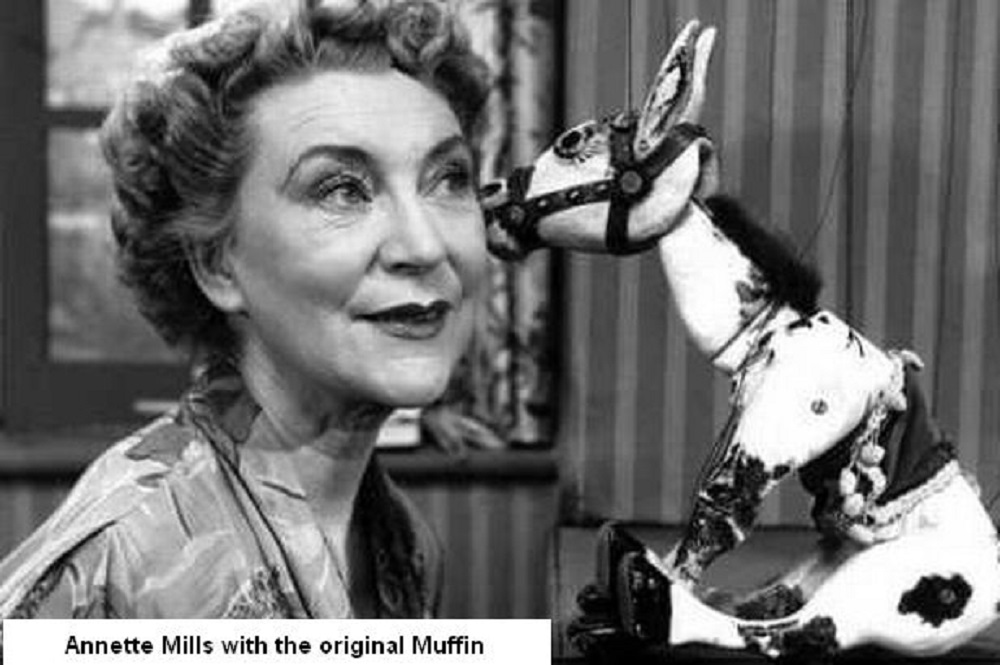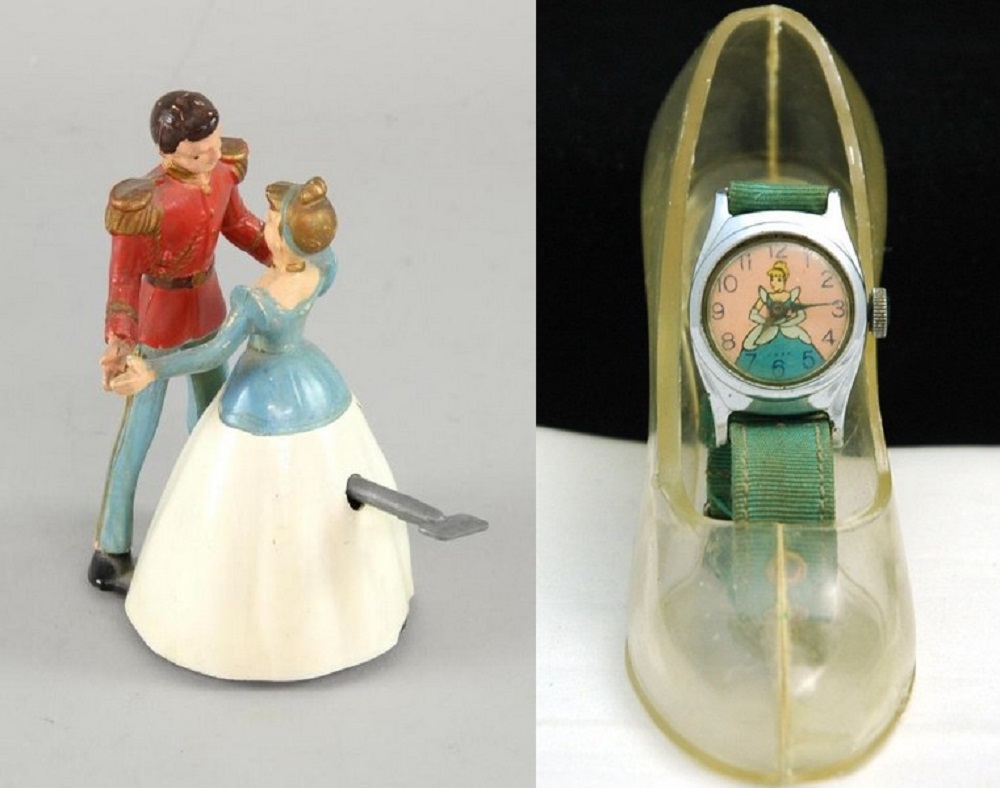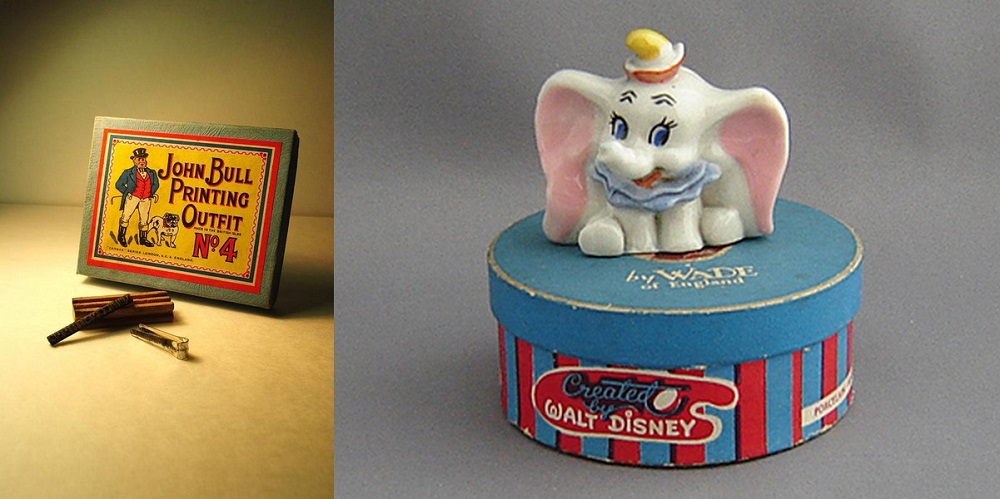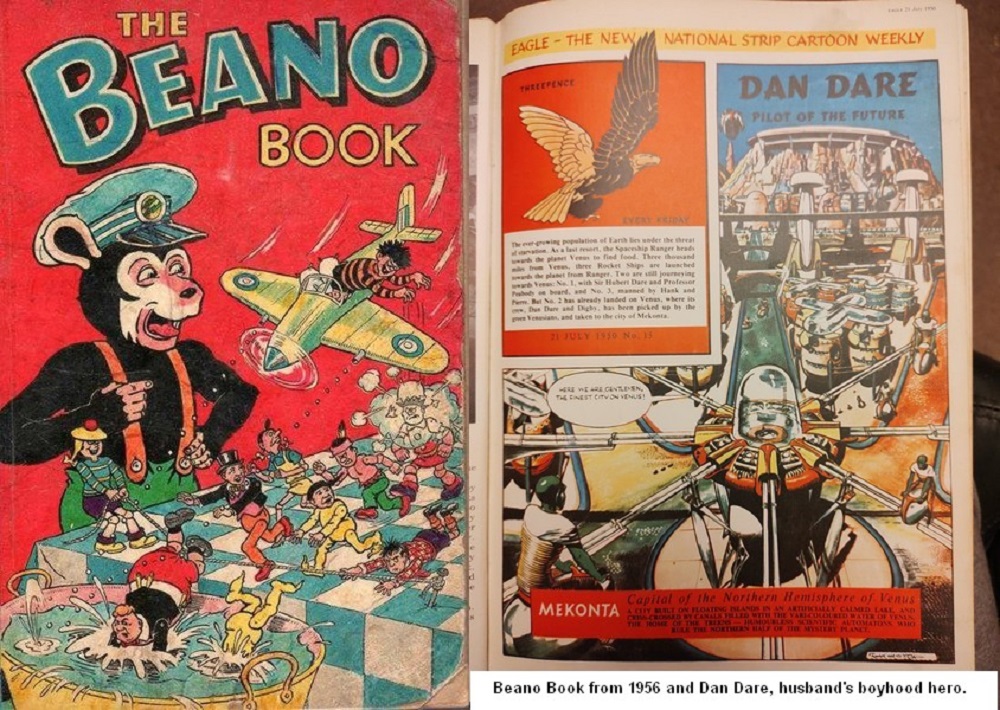According to Woolworth’s archive, clockwork train sets costing from 7 shillings (35p) were the top present for boys in 1951. The same year, tea sets were the most popular present for girls. They came in plastic, pottery or bone china, and ranged in price from half a crown (12 and a half pence) to 5s (25p).
Despite the re-appearance of toys in shops, to make Christmas special, a certain amount of wartime ‘make do and mend’ was still being employed. Anyone handy with a fret saw or paint brush was in demand, as were ladies who could dress dolls, make soft toys or doll’s house furniture from odds and ends. One year Father Christmas brought me a small chipboard kitchen dresser, probably made by someone my dad knew. I loved it, despite its ghastly shade of pink (war surplus paint perhaps?). The painted tin tea set from my grandparents sat on the open shelves, while jigsaws and games could be stored in the bottom cupboard.
One year Father Christmas brought me a small chipboard kitchen dresser, probably made by someone my dad knew. I loved it, despite its ghastly shade of pink (war surplus paint perhaps?). The painted tin tea set from my grandparents sat on the open shelves, while jigsaws and games could be stored in the bottom cupboard.
Presents tended to be gender specific in those days. They were a not so subtle indication of the futures our parents envisaged for us. Few boys who got chemistry sets actually became scientists. However, most girls who received toy domestic equipment were likely to become only too familiar with the standard versions later in life.
Over the years, I received sewing and baking sets, mangle with wooden rollers, miniature brush and dustpan, not to mention baby dolls.
By the middle of the decade, toys influenced by cinema, comics and later by television, were what children requested. At different times, a Davy Crocket hat or Dan Dare outfit was a must. But perhaps the most surprising TV inspired favourite was a metal Muffin the Mule puppet.
The concept of merchandising had taken root, even if the word was unknown back then. Animated films meant shops were full of Wade’s Disney Hat Box characters, and clockwork Cinderellas who waltzed endlessly with Prince Charming. I had a Cinderella watch with pink strap, which came in a clear plastic (glass) slipper. Whatever the current craze, it was sure to appear on most Christmas lists. The ones I remember best were yo-yos, hula hoops and roller skates. Maybe it was because I was shy, but it mattered very much that my present of desire was exactly ‘right’.
Whatever the current craze, it was sure to appear on most Christmas lists. The ones I remember best were yo-yos, hula hoops and roller skates. Maybe it was because I was shy, but it mattered very much that my present of desire was exactly ‘right’.
Nothing but a Lumar 99 yo-yo would do. Don’t ask me the reason, but hula hoops had to be smooth plastic to have any credibility. Christmas morning, mine had the dreaded ridges, so any pretensions to be one of the ‘in crowd’ were definitely out.
During the roller skating craze, everybody except me was whizzing about on rubber tyred wheels. It was either those naked metal wheels, or a complete lack of balance, but I never did master the art of roller skating.
Unless it snowed, Christmas holidays were spent inside by the fire. Even if they were ignored the rest of the year, stencil and John Bull printing sets, blow football, Mr Potato Head, and Plasticine with little moulds like inverted butter stamps, came into their own. A compendium of games was up market, but sets of draughts, snakes and ladders, Ludo or even tiddly-winks were not to be sniffed at. Later in the decade, board games like Monopoly and Cluedo came along, but they were expensive, so stockings were more likely to contain a pack of cards.
A compendium of games was up market, but sets of draughts, snakes and ladders, Ludo or even tiddly-winks were not to be sniffed at. Later in the decade, board games like Monopoly and Cluedo came along, but they were expensive, so stockings were more likely to contain a pack of cards.
To make them more attractive as presents, manufacturers often used characters from popular fiction in their games of Old Maid, Donkey or Happy Families. My favourite was a set of Snap cards with characters from the Rupert Bear comic strip.
Christmas annuals containing topical stories, optical illusions, ideas for things to make and puzzles of every kind, could be bought at newsagents. However annuals of the comics we read every week were probably favourite. Someone usually gave me the Beano with Lord Snooty, Keyhole Kate and Pansy Potter, as well as so much more that I never tired of re-reading them. I invariably got one of the things specified on that list (or lists) I sent up the chimney. My parents would have been astounded to learn I felt the best bit of Christmas morning was opening my stocking. I loved those catch penny items such as chalks, crayons, puzzles, books and chocolate money, sold as stocking fillers.
I invariably got one of the things specified on that list (or lists) I sent up the chimney. My parents would have been astounded to learn I felt the best bit of Christmas morning was opening my stocking. I loved those catch penny items such as chalks, crayons, puzzles, books and chocolate money, sold as stocking fillers.